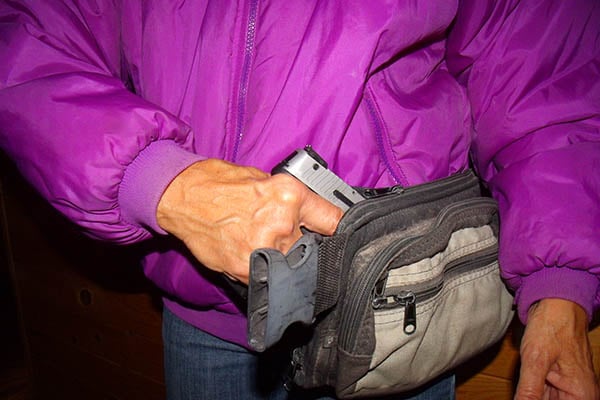
Last Updated on
With the temperature dropping, the wind blowing and the snow falling, I don extra clothing to be comfortable when I leave my home. If I carry a concealed firearm on-body, getting to it when I need to draw it from my holster may be a challenge if I haven’t pre-planned my wardrobe. Depending on where and how I carry my firearm and my scheduled activities for the day, I may choose to carry off-body instead. On-body vs. Off-body is a challenge in the winter as I discuss clothing and carry methods.
I layer my clothing when it’s cold. I prefer carrying off-body because I’m concerned that I may not be able to get to my pistol when its needed, especially if I’m suited up like the Pillsbury Dough Boy. My preferred off-body carry is a purse. I can carry it on my shoulder or in my hand without the fear of clothing getting in the way. The same could be said of a briefcase with concealed carry capability. If I get warm from being in a climate-controlled environment, I can easily remove my outer wear without displaying to the world that I’m carrying a gun. Then it becomes a matter of just practicing carrying the off-body method in such a way as to make retrieval of the firearm smooth and quick.
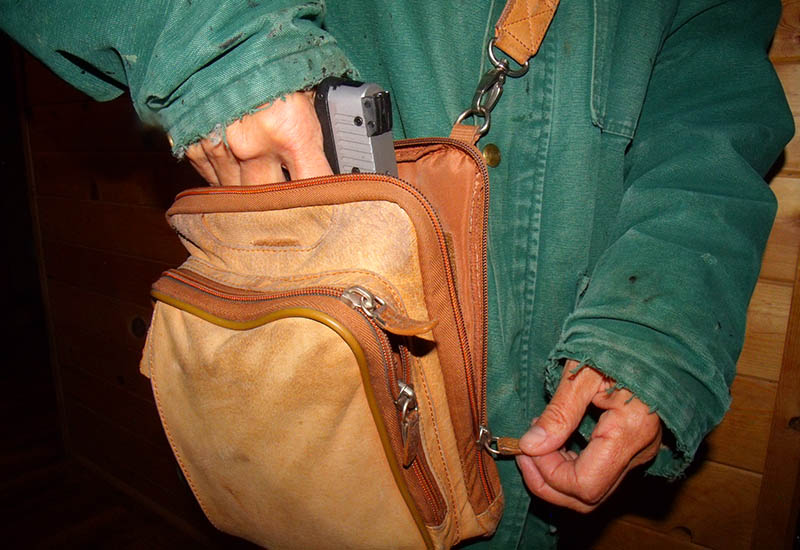
If I choose on-body carry and I’m wearing layered clothing, I must pre-plan my wardrobe. More movement of my body and my clothing may be required to access my firearm and without practice of this, my draw may be compromised and subsequently the speed at which I acquire control of my firearm may be diminished. Keeping this in mind, I’ll examine my preferred methods of on-body carry and the concerns of concealed carry in winter.
Winter Carry Methods
The concealed carry shirt is one of the simplest methods. I can wear clothing under it for insulation. I can remove my outer coat and sit or stand comfortably without displaying the firearm. There are numerous companies that sell either shirts, vests, or coats, which like my concealed carry shirt, will internally conceal and allow access. It then becomes a matter of choice and affordability. If I don’t remove my outer coat, my concealed carry shirt still requires the movement of the coat and the shirt’s material so practicing moving the outer wear and drawing from the shirt is needed to ensure I’m comfortable and expedient with my draw.
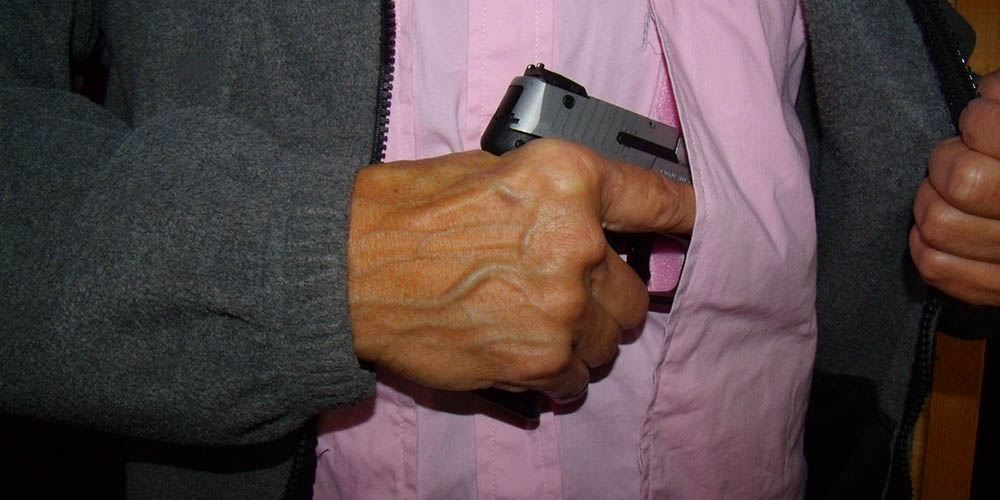
The waist holster which I prefer to wear just behind the hip bone requires a little bit more thought. If I choose an Outside the Waistband holster, I must be cognoscente of what clothing may catch on parts of the holster and the firearm as I go to draw it. If I choose an Inside the Waistband holster, more of the firearm and the holster is covered by the waistband and both are less likely to catch on clothing I may be wearing. If I wear a shirt tucked-in, covered by a sweatshirt, covered by a coat, then removing the coat will not disclose my holster if my sweatshirt sufficiently covers it. If I choose to remove the sweatshirt, then I could have the untucked bottom shirt cover the holster as long as the tails are sufficient in length. I might look a little disheveled as my bottom shirt may be wrinkled, but that’s the choice I make. Even if I must draw my firearm while wearing the coat, if I can lift the coat and sweatshirt and possibly the bottom shirt sufficiently above the holster or away from the holster, I can respond to the threat. This requires practice to avoid the hooking or snagging of my firearm on the clothing in the process of retrieving it.
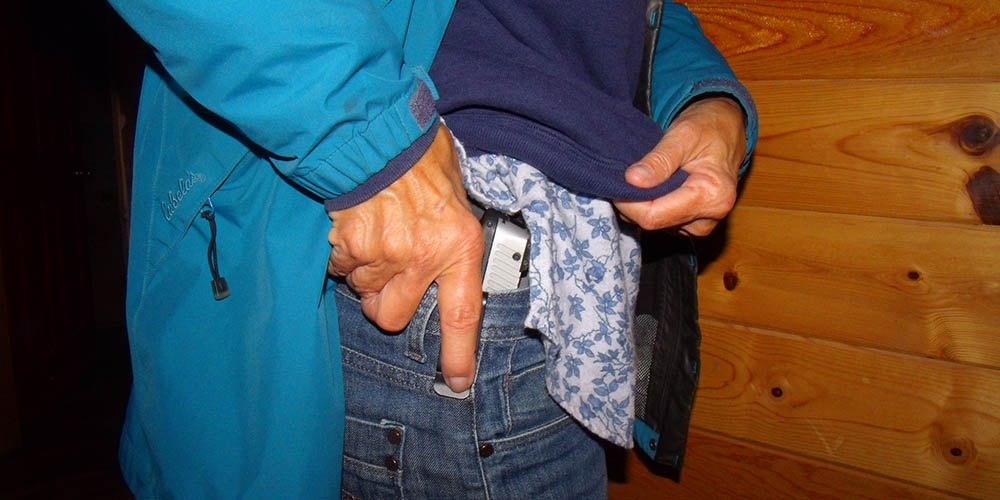
The shoulder holster also requires the decision as to whether I want the holster on bare skin or over a bottom shirt. If it’s directly on the skin, then I need the ability to move two-three layers, rip buttons, unzip or lift the layers in such a way that I gain access with my strong hand. If I’m not flexible enough, this may be difficult. If I choose to wear the shoulder holster over a bottom shirt, then I may be able to layer it with a vest or a light jacket under a heavier jacket, which then only requires me to unzip or unbutton one layer to expose the firearm. Once again, I must be aware of what might hook or snag as I retrieve it.
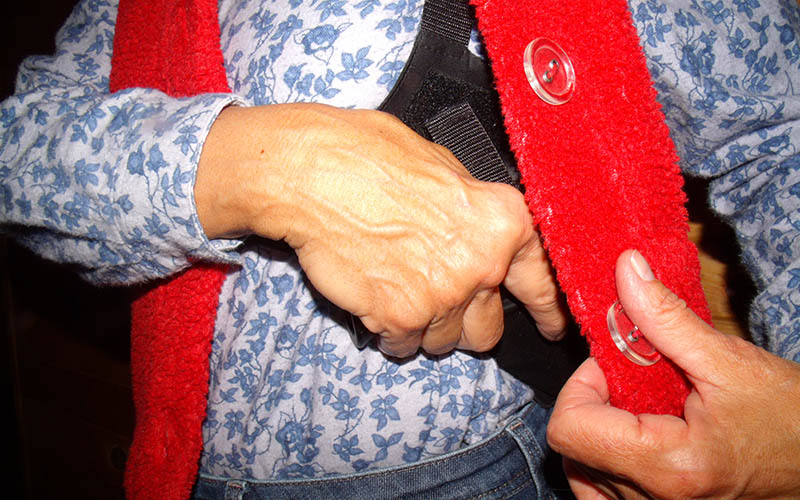
The Fanny Pack is ideal as it can be worn over the winter wear rather than under it. No clothing needs to be moved and dependent upon the style, design and color of the fanny pack, it may not look like I’m carrying concealed. It can be used strong hand or cross-draw and the firearm easily accessed by way of zippers or buckles. Generally, with a fanny pack, two hands are needed to access the firearm, one hand to hold the fanny pack while the other hand unzips or unbuckles. If I try accessing the zipped or buckled concealed pouch without a steadying hand, the pack may rotate around my waist in the process. A fanny pack does not preclude me from wearing it under a coat, if I’m concerned about appearance. However, then I must realize that like the waist holster, I must move layer(s) to manipulate the zipper and buckle and successfully draw my firearm. Both hands will be needed in this maneuver.
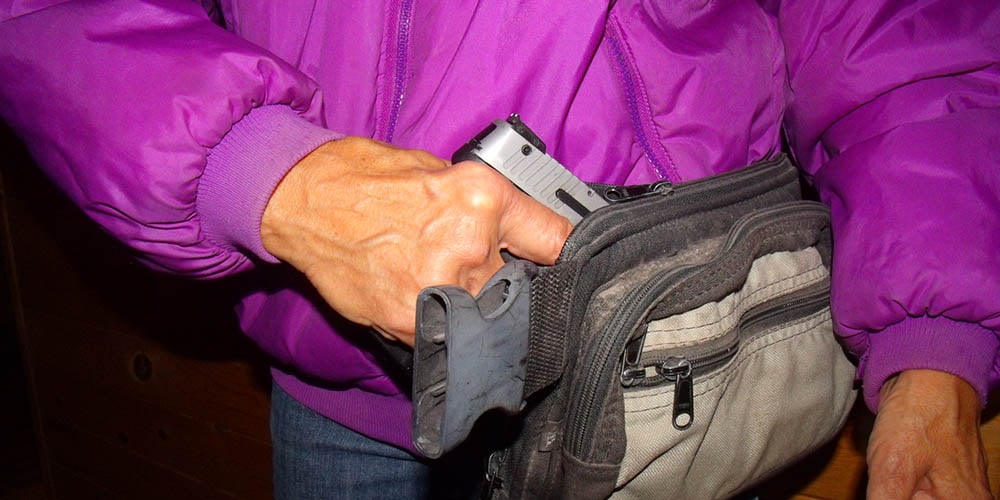
All five of these methods of concealment during the winter months require practice. If I absentmindedly dress without pre-planning a situation, I may not be successful in drawing my firearm. There’s a saying that “The body won’t go where the mind hasn’t been,” so besides planning and practicing with my wardrobe, I mentally visualize what needs to occur if there is a confrontation. By consciously establishing in my mind that I’m wearing more clothing and the location of your firearm under or over that clothing, I’m less likely to hesitate with your draw when I’m confronted. If I expect that something will happen I’ll be mentally and physically prepared for it. If nothing happens, I’ll be thankful.




Leave a Reply